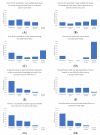Utility of Cadaveric Porcine Heads for Teaching Oral Surgical Procedures in an Australian Dental School: A Pilot Study
- PMID: 38892742
- PMCID: PMC11172896
- DOI: 10.3390/jcm13113032
Utility of Cadaveric Porcine Heads for Teaching Oral Surgical Procedures in an Australian Dental School: A Pilot Study
Abstract
Background/Objectives: Cadaveric models have traditionally been a mainstay of dental and medical education worldwide since their inception. In Australia, educators at dental schools were among the first to use cadaveric porcine heads in formal teaching in oral surgery. This practice has since fallen out of favour in most modern dental curricula. The aim of this pilot study was to determine the utility of cadaveric porcine models for oral surgery training from a student perspective (Griffith University, Gold Coast, Australia). Methods: Thirty participants who were all third-year dental students attended a two-hour session comprising a 30 min lecture followed by a 90 min practical workshop. The lecture outlined the steps and supervision of students during the practical and was provided by a consultant maxillofacial surgeon. At the conclusion of the workshop, participants were asked to anonymously complete a printed questionnaire with eight questions related to their experience. Results: Prior to the workshop, two-thirds (61%) of participants felt that they had been taught the surgical procedure for raising mucoperiosteal flaps adequately in their dental school curriculum during their third year, although only 43% of students had assisted specialty residents in raising a mucoperiosteal flap and 14% reported having performed the procedure themselves. Almost all students (96%) agreed that the porcine model was useful for their dental education and that they would practice the exercise using the model again if provided with the opportunity. The questionnaire had a 93.33% completion rate. Conclusions: This pilot study indicates that porcine heads present a useful, low-cost adjunct in the learning of basic oral surgical procedures.
Keywords: dental education; mucoperiosteum; oral and maxillofacial surgery; oral surgery; pig head; porcine model; surgical flap.
Conflict of interest statement
The authors declare no conflicts of interest.
Figures



Similar articles
-
Teaching of forensic odontology in basic dental programmes in nine Australian dental schools: A survey.Eur J Dent Educ. 2019 Aug;23(3):244-250. doi: 10.1111/eje.12425. Epub 2019 Feb 10. Eur J Dent Educ. 2019. PMID: 30681240
-
A Comparison of Models for Teaching Suturing and Surgical Skills to Dental Students.Int J Dent. 2024 May 20;2024:3783021. doi: 10.1155/2024/3783021. eCollection 2024. Int J Dent. 2024. PMID: 38803464 Free PMC article.
-
Dental student perceptions of oral and maxillofacial surgery as a specialty.J Oral Maxillofac Surg. 2013 May;71(5):965-73. doi: 10.1016/j.joms.2011.05.014. Epub 2011 Aug 6. J Oral Maxillofac Surg. 2013. PMID: 21820785
-
Virtual patients versus small-group teaching in the training of oral and maxillofacial surgery: a randomized controlled trial.BMC Med Educ. 2019 Dec 4;19(1):454. doi: 10.1186/s12909-019-1887-1. BMC Med Educ. 2019. PMID: 31801531 Free PMC article. Clinical Trial.
-
Striving for excellence in a little red dot: Exploring the evolution of oral and maxillofacial surgery training and practice in Singapore.J Dent Sci. 2024 Dec;19(Suppl 1):S10-S16. doi: 10.1016/j.jds.2024.09.026. Epub 2024 Oct 10. J Dent Sci. 2024. PMID: 39807436 Free PMC article. Review.
References
LinkOut - more resources
Full Text Sources

